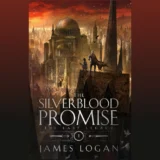
If you’re a fan of anime, or of Hayao Miyazaki, then you’ve probably seen the logo in Figure 1, which is the logo of Studio Ghibli, founded by Miyazaki in 1985, after the success of his feature film, Nausicaä of the Valley of the Winds. In a column of January 2015, I talked a fair bit about Miyazaki and his films (https://amazingstories.com/2015/01/azaki-azaki-azaki-miyazaki/) and, since I’ve recently seen a new Studio Ghibli film that was definitely not made by Miyazaki, thought maybe you’d be interested in both that film and my new take on an old film; i.e., 2008’s Ponyo. So I’ll give my impression/review of both films’ high points and weak spots. Fair warning: to do so, I will be using what, in a review of a new blockbuster like Black Panther, would be called “spoilers.” I don’t consider them spoilers here, as the ideas in these films—including the plots—are not as important as the visuals. Both films are specifically made for visual impact; although The Red Turtle is made for adults, Ponyo is most specifically made for children, as far as I can tell.

Ponyo is the story of a sea creature (the main character, Sôsuke [Matt Damon], calls her a “goldfish,” leading me to wonder whether that’s an accurate translation from the Japanese. After all, what goldfish have hair and humanoid faces?) Anyway, here’s the plot, such as it is. (I will refer to the American actors, since my Japanese has degraded/diminished to the point where I can no longer speak it or read it.)
Fujimoto (Liam Neeson) used to be human—apparently he became some sort of ocean spirit back in the sixties, since he looks like something out of Peter Max’s head—but now spends all his time seeking to keep “balance” between the ocean and the land, plus fathering hundreds of tiny female children that look at least a little bit like fish; they have fins instead of hands, but humanoid faces with front-facing eyes, and red hair/bodies. Ponyo (Noah Cyrus) is one of these.
(Wikipedia says Ponyo’s name is an onomatopoeia, based on Miyazaki’s idea of what a “soft, squishy softness” sounds like when touched, maybe the Japanese version of “floop” or something. Also, the story’s seaside village is inspired by Tomonoura, a real town in Setonaikai National Park in Japan, where Miyazaki stayed in 2005—also from Wikipedia. In my opinion it looks wonderful; a place I would love to live.)
Ponyo and her hundreds of little sisters are kept in some kind of undersea thingy where Fujimoto does his work, but she’s more curious than they; she wants to get out and do stuff. She meets five-year-old Sôsuke (Frankie Jonas) by accident when, exploring the upper stretches of the ocean, she gets swept up by a dredging vessel and accidentally stuffed into a glass bottle. Sôsuke finds her in the shallows, breaks the bottle and puts her in a green plastic bucket. He accidentally cuts his thumb while doing so, but she licks the wound and it heals.

Sôsuke’s mom, Lisa (Tina Fey), is an aide in a Senior Centre some distance from their house, which is on top of a small peak; a two-lane road leads down to the town, and Lisa often drives recklessly between their house and the Senior Centre. Sôsuke’s school is right next to the Senior Centre, where he often interacts with four of the senior citizens in wheelchairs (two of them are played by Cloris Leachman, Lily Tomlin, and Betty White). Sôsuke’s dad is captain of a fishing ship of some kind, a large ocean-going vessel, and he’s not home that often.
Figure 3 shows some of the main characters—from left, we have Yoshi, Kumiko (I think), Ponyo as girl, Ponyo as half-human—above her is Ponyo as sea creature in bubble, Sôsuke, Lisa, and Fujimoto. Okay, long story short: Sôsuke finds Ponyo, takes her to school for show and tell (against the wishes of his teachers), Fujimoto recaptures her, but she escapes again, loosing all kinds of elixir-fueled prehistoric fish into the world. This upsets the balance, and the ocean rises—possibly because the moon is too close to the Earth, but possibly because this whole balance thing pulls it too close to the Earth. At any rate, the ocean rises, drowning most of the town; the townspeople manage to escape in boats.
Sôsuke and Ponyo (who “loves” him, and was looking for him, causing the ocean to rise) are isolated in the little house on top of the peak, but Ponyo manages to magically enlarge Sôsuke’s little toy boat (fueled by heated water) and they set off in search of Sôsuke’s mother, who had braved the rising waters to go help at the Senior Centre.
Eventually, as Sôsuke gets closer to the Senior Centre, Ponyo devolves from human girl back to half-human, the boat shrinks, and all the stuff she had done by magic becomes undone… and as far as I could tell, there’s no reason given! But we learn that Ponyo’s mother (Cate Blanchett) (and Fujimoto’s wife) is another, much bigger spirit… and she’s kept the Senior Centre safe under the shade of a giant jellyfish, even though Lisa and the seniors are now breathing water and no-one’s wheelchair-bound anymore. (The seniors think they’re on the “other side,” i.e., dead.) But fear not.
Sôsuke passes the ultimate test, Ponyo becomes human (and loses her magic), the waters recede and the moon goes back to where it belongs. Let’s face it: as stories go, this one is very thin. And lots of it is completely unexplained (and maybe unexplainable). At one point Fujimoto grumbles about the humans being dirty—while he passes through the afterwash of the dredger—and we think it’s gonna be another ecological thing; he does keep talking about “balance.” Nope… that’s a red herring. By the end, “balance” and the ecological thing is still not explained.
Where did he come from? What’s with all the little red Ponyo sisters? Did Ponyo’s mother make it possible for the seniors to walk again and to breathe water? There’s no explanation for a lot of stuff in this movie. It remains a visually-oriented kids’ movie… and more disappointingly, it’s not even well done visually—compare the backgrounds in Figures 2 & 3 with the background in Figure 4… very weak indeed. One of the things Studio Ghibli was well known for was the quality of its animation—and it was not computer animation before Ponyo, as far as I know. It’s said that Miyazaki himself did 40,000 hand-drawn cels for Princess Mononoke! There’s something sad and sloppy about this movie; but kids may enjoy it. Because it’s Studio Ghibli, I’ll be kind and give it three dinguses: ¤¤¤.

Enough about Ponyo! Let’s talk about Ghibli’s 2016 offering, The Red Turtle! Although the previous movie’s animation was good, it was terribly disappointing, as I said. But this newer movie—although released by Studio Ghibli, it was not actually made by Ghibli (according to IMDB, only 6 Ghibli animators worked on the film)! It was made in a joint Belgian/Japanese effort, but mostly by Michael Dudok de Wit and his crew.
The storyline is simple: a man in a rowboat encounters extreme weather, the rowboat overturns, and the man manages to somehow find it and cling to it until it is broken on the rocks of a desert(ed) island. Over the period of the movie, he attempts to escape the island by building a raft out of the native bamboo growing there, but is repeatedly rebuffed, and his raft repeatedly broken up, by what turns out to be a giant red sea tortoise.

Eventually, he manages to capture the tortoise and turn it over on the sand so it is helpless; it appears to die. Later, the shell cracks open and it would appear a woman has come out of it. The two live together on this island and have a son, who eventually grows up and leaves. The couple stays together until the man grows old and dies. The woman turns back into a red turtle and slowly and painfully flippers her way back to the ocean.

As I said, the storyline is very simple; it’s a fable of sorts, with no moral. And no explanation—in fact, even less than in Ponyo—except that this film is elevated over Ponyo by the fact that it is wordless. (There is at least one “Hey!”—but I’m not sure that really counts.) You have to watch the visuals and interpret what happens in your own head; visually, although there isn’t much scenery, what is here is amazingly lush compared to Ponyo. It’s a return to the visual feast we expect from a Studio Ghibli film. From the immense waves (we are dropped into this at the beginning in media res, so to speak, with no idea where the rowboat came from) at the start, to the bamboo forest, the tracks in the inland ground cover, the freshwater pool in the middle of the island, the sand/water interface at the beach: all are done in extreme clarity.

You will, I believe, be as enthralled as my wife (the Beautiful and Talented Lynne Taylor Fahnestalk) and I were; you’ll be thinking about the life cycle shown here for a long time. This film deservedly got an Oscar nomination; it apparently won eleven awards at various other places, including a special jury award at Cannes. It’s a keeper. I’ll give it 4 out of five thingies: ¤¤¤¤!
LAST NOTES: I just recently saw The Last Jedi. I liked it! To me, it was more Star Wars than Star Trek: Discovery is Star Trek, if that makes sense. Although I think it’s a lot longer than it needs to be, I will see it again; maybe I’ll do a quick review later.
Comments? Brickbats or compliments? You can comment here, or on my Facebook page, or in the several Facebook groups I link to this column. All comments are welcome, positive or negative. If you don’t agree with me, or think you have something to contribute, don’t hesitate to let me know! My opinion is, as always, my own, and doesn’t necessarily reflect the views of Amazing Stories or its owners, editors, publishers or other columnists. See you next week!










